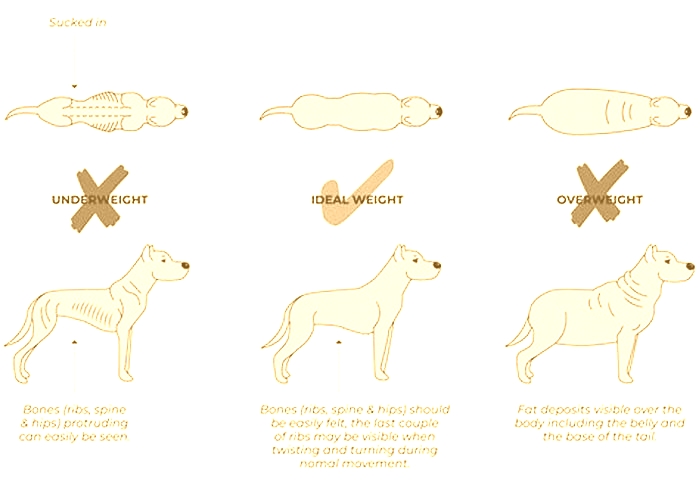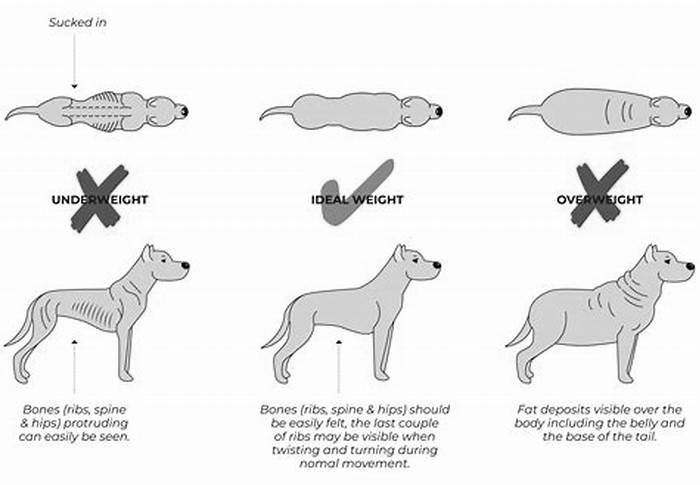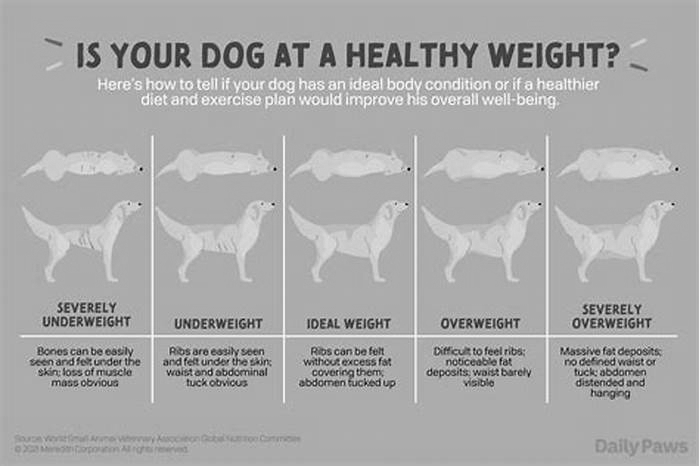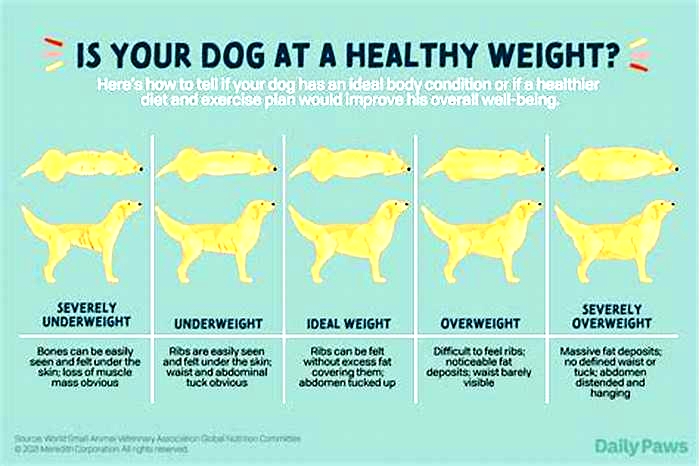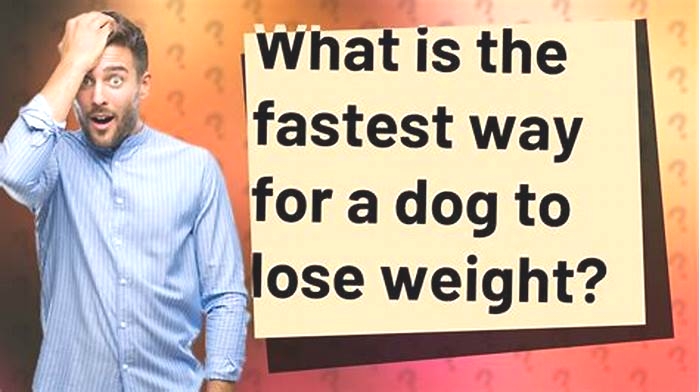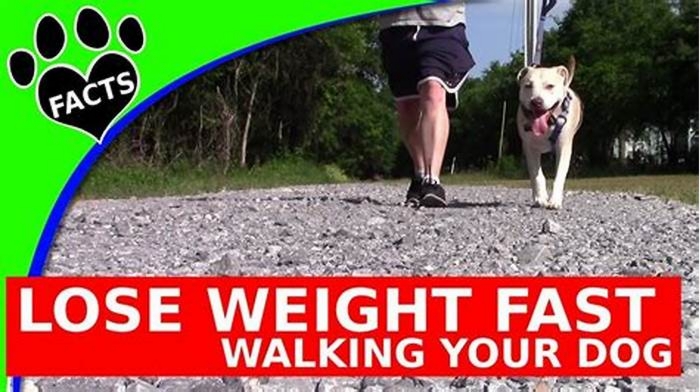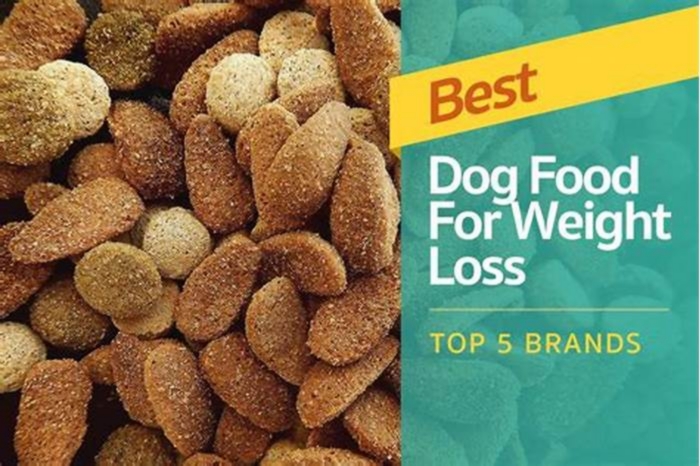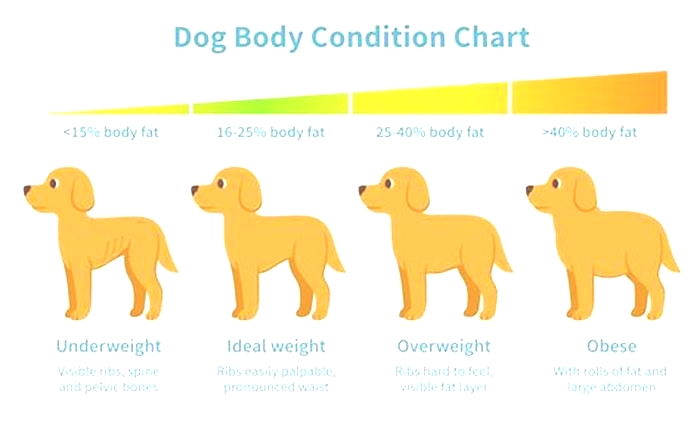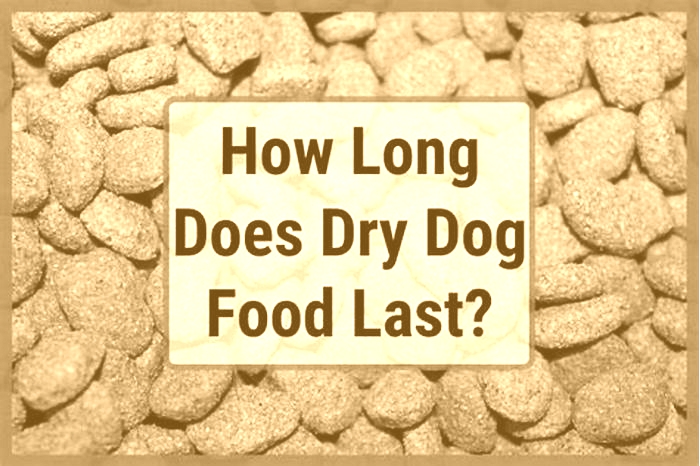How long does it take for a dog to lose weight
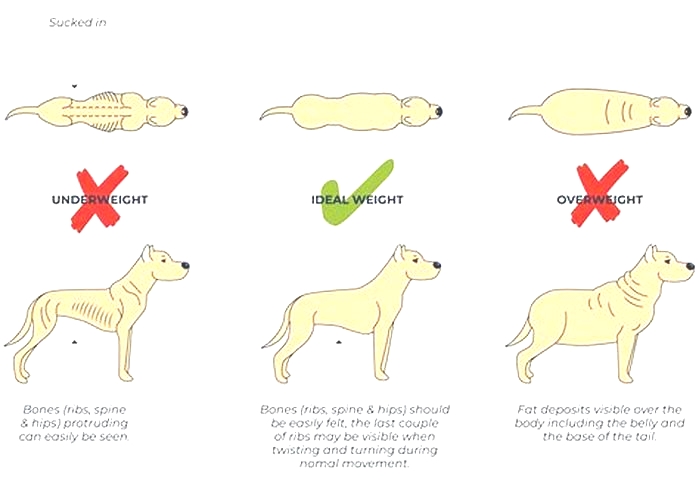
How Long Does it Take for a Dog to Lose Weight?

Is your dog currently on a weight loss plan? In a prior blog post, I discussed ways to help your dog lose weight, but now you may be wondering how long will it take?
Helping your pup lose weight can be a time-consuming process and doesnt happen overnight. The entire process can take many months.
While this may be frustrating, the rate at which your dog loses weight is essential. If they lose weight too quickly, it can cause some serious medical conditions.
In this article, Ill talk you through a healthy timeline for your dogs weight loss and answer the question: How long does it take for a dog to lose weight? Ill also discuss why timing matters.
Quick answer: It depends on your dogs current weight, how much they need to lose, and the rate they can safely lose weight. For most dogs, it can take six to eight months to reach their weight loss goals, but the answer depends on the factors discussed. Ideally, they should be losing 1-2% of their body weight per week.
While this article is vet-written, this advice is general in nature and should not be considered specific to your pet. Please consult with your veterinarian for specific concerns.
Healthy Timeline: How Long Does It Take for Your Dog to Lose Weight Safely?
The amount of time it will take your dog to reach their weight loss goals is based on several factors. The first thing you need to do is determine your pets current weight and how much weight they need to lose.
Next, youll need to determine the rate at which your pet can safely lose weight. Ideally, your dog should be losing 1-2% of their body weight per week.
That means that if your dog weighs 50 lbs, they should be losing between half a pound and a pound per week.
While this is a great rule to follow, it can become tricky with smaller dogs. If your dog is only 20 pounds, they should only be losing a few ounces a week.
In this case, its better to look at the bigger picture. A dog of this size can safely lose up to a pound in 1 month.
When you combine the amount of weight your dog has to lose with their weight loss rate, you can determine how long the whole process should take.
For most dogs, the entire process can take six to eight months. Remember that this timing will depend on your dogs starting weight and how much weight they have to lose.
When Will You Start Noticing Results

After starting your dog on a weight loss plan, it can take some time to start noticing results. You arent going to see results in the first few days or even the first week.
It can take a month or more before you start seeing visible differences in your dog.
Because weight loss is a gradual process, visual changes may be difficult for you to detect. For this reason, regular weigh-ins can be extremely helpful.
Keeping track of your pets weight over time will help you monitor their results and adjust their plan as needed.
Veterinarians typically recommend that pets be weighed at least once a month to monitor progress.
What To Do if You Arent Noticing Results
For some dogs, weight loss can be a slow process. However, if your dog hasnt made any progress after a month, you may need to reevaluate their weight loss plan. Here are a few questions to consider:
- Are your dogs treats being accounted for in their adjusted daily calorie intake?
- Is your dog getting enough exercise?
- Have you made the appropriate adjustments to your dogs meals?
- Is there a medical condition that hasnt been addressed?
Gradual weight loss isnt always a bad thing. As long as they are progressing in the right direction, be patient. It may just mean that your dog will need to stick to their diet for a little bit longer.
Why To Avoid Your Dog Losing Weight Too Quickly

If your dogs weight loss is happening at a snails pace, it may be tempting to try to speed up the process.
However, shedding those extra pounds too quickly can pose some serious risk to your pets health. Some of these risks include:
Nutritional Deficiency
Dog food is formulated to contain a specific balance of nutrients to meet your dogs daily needs. These daily needs are only met if youre following the feeding instructions on the label.
If youre feeding your dog less than the recommended amount, your dog can develop a nutrient deficiency.
Trying to speed up your dogs weight loss by making dramatic cuts to their food can exacerbate this problem. Signs of nutrient deficiency include a lack of energy, hair loss, change in bowel movements, and depression.
Luckily, corrections can be made to restore your pets nutrient balance and avoid more serious consequences.
Specialty diets formulated for weight loss can also help avoid nutritional deficiencies. These diets account for the smaller portions your pet will be eating and balance the nutrient content accordingly.
Hepatic Lipidosis
Hepatic lipidosis is a liver condition that is sometimes referred to as Fatty Liver disease. It is commonly discussed in cats but can also occur in dogs.
During rapid weight loss, the body begins to break down and mobilize its fat stores. Normally this fat would be processed by the liver and converted into energy.
However, when large amounts of fat are mobilized, the liver can become overwhelmed.
Hepatic lipidosis can lead to decreased liver function and, in some cases, even liver failure. Pets often become lethargic and develop a yellow tint to their skin and eyes, known as jaundice.
Hepatic lipidosis is a serious medical condition that requires veterinary evaluation and treatment.
Undesirable Behavior

While there are medical concerns associated with rapid weight loss, dogs can also develop behavioral issues. Dramatically reducing your dogs meals can leave your pet feeling hungry and frustrated. Over time, they may start to act out because of these feelings.
Some dogs may become aggressive at mealtime. Others may look for other means of filling their grumbling stomachs. This can result in dumpster diving or consuming food or objects that could be harmful.
Changes to the diet should be made gradually to avoid these issues. If your dog is used to getting large meals, supplement their new portion of food with some canned green beans (Make sure this is okay with your vet first!).
This low-calorie substitute will give the illusion of a larger meal and help them stay full longer.
If your dog is losing weight too quickly, its important to reevaluate your pets weight loss plan. Consider talking to your vet to see what changes need to be made.
Getting your pet to an appropriate weight is essential to their long-term health, but it must be done safely.
Summary
Helping your dog lose weight is a process that requires patience and consistency. It can take months for your dog to reach their ideal weight.
Regular weigh-ins are helpful to monitor your pets progress and provide some motivation. Remember that slow and steady wins the race!
By the way, if youre looking for ways to help your dog lose weight, I wrote an entirely separate blog post on it.
I hope this information serves as a helpful guide to determine how long it will take for your dog to lose weight. I wish you the best of luck on your pets weight loss journey.
Walking for Weight Loss: Tips for Overweight Dogs
Reviewed for accuracy on December 12, 2018, by Dr. Katie Grzyb, DVM
Obesity in dogs is a big problem for pet owners. According to the Association for Pet Obesity Prevention (APOP), the number of overweight dogs continues to rise. In 2017, obesity affected 56 percent of dogs in the US.
And while you might think that fur-covered rolls and big bellies look cute, having an overweight dog can lead to serious health problems.
Pet parents should talk to their veterinarians at the first sign of their dogs gaining weight, says Dr. Kelly Ryan, director of veterinary services at the Humane Society of Missouris Animal Medical Center of Mid-America. Serious health issues may be managed or even prevented if a good diet and exercise plan are implemented right away.
Weight Loss for Dogs: Tips for Walking
In addition to veterinarian-recommended dietary changes, getting your overweight dog to walk regularly can help her shed some of the extra weight. Here are some tips you should consider when starting a walking routine to help your dog lose weight.
Before beginning, talk to your veterinarian.
If your dog is overweight, its important to consult a veterinarian, says Dr. Ryan, to come up with the best exercise plan that is right for your pet.
There may be serious underlying medical conditions causing weight gain. Plus, carrying extra weight can lead to arthritis and other conditions that can make exercise painful, she says. Your veterinarian will want to rule out any issues first, then he or she will discuss the best way to get started with a walking routine.
Take it slow.
Dont assume that your overweight dog will be able to walk far or up big hills right from the start. Take your time and start slow.
Most pets are able to walk at least short distances, and many can work up to longer distances over time without experiencing soreness or discomfort, says Dr. Stephanie Liff, medical director of Pure Paws Veterinary Care in New York City. You know your pet best, so if they seem to be struggling, listen to them and cut that exercise session short and talk to your vet.
Pay attention to your dogs breathing.
If your overweight dog is having difficulty breathing while on a walk, its important to slow down or take a break and assess the situation.
Overweight dogs are at risk for respiratory trouble, especially when exercising, says Dr. Ryan. This is because extra fat in the chest prevents the lungs from fully expanding. Plus, extra fat in the abdomen pushes up against the diaphragm. The lungs have to work harder to supply oxygen.
This is true with brachycephalic breeds also. They tend to overheat quickly, even in temperatures you would not expect, so it is pertinent to monitor their breathing during walks.
Symptoms such as coughing, shortness of breath or difficulty breathing, says Dr. Ryan, can make a walk uncomfortable or even dangerous for your dog.
Use the right equipment.
If you have an overweight dog, using and bringing the right equipment while out on walks will keep your dog safe. For walking an overweight dog on leash, use a walking harness or a head halter, says Dr. Ryan. Regular collars can put too much pressure on your dogs trachea, causing additional breathing problems or injury if your dog pulls too much.
The PetSafe Gentle Leader Dog headcollar and leash is a safe and effective option for overweight dogs. Dr. Ryan says to consult a veterinarian when using a head collarso that you know how to fit it and use it correctly.
If youd prefer to use a regular dog harnesswhile out on walks, look for a sturdy, no-pull dog harnessoption, like the HDP Big Dog no pull dog harness or the Sporn no-pull mesh dog harness. And consider a heavy-duty dog leashthat wont rip or tear. The Logical leather dog leash or the Frisco solid nylon dog leash are both solid options.
You will also want to bring water and a portable water bowl on walks to prevent your dog from overheating and from becoming dehydrated, says Dr. Ryan.
You can use a clip-on bottle, like the KONG H2O stainless steel dog water bottle, or dog travel bowls, like the Petmate silicone round collapsible travel pet bowl, to provide water throughout the walk.
Consider low-impact alternatives to just walking for exercise.
Although most overweight dogs can handle short walks, dogs that have arthritis or joint problems may benefit from other forms of exercise. Just like with people, carrying around extra weight is tiring and taxing on the joints, says Dr. Liff. Also, some pets will put on weight secondary to arthritis, which restricts their ability to exercise.
If this is the case, one joint-friendly exercise option is hydrotherapy, where your overweight dog would walk on an underwater treadmill. This hydrotherapy machine is a great way for pets to burn extra calories with a low-impact workout, says Dr. Ryan. The water reduces the stress on the pets joints. The warm water can also reduce joint swelling, helping dogs who suffer from arthritis.
Exercise and Diet: Tips for Overweight Dogs
In addition to getting your overweight dog started on a walking routine, its just as important to pay attention to what youre feeding her. Diet is extremely important for weight loss, and it is imperative to consult your veterinarian about your own pets dietary needs and the best options for weight loss, says Dr. Liff.
Use these dietary tips along with exercise to help your dog lose weight.
Offer treats sparingly.
While dog treatscan be a helpful way to motivate or train dogs during walks, its imperative that you pay attention to the types and quantity of treats youre feeding your overweight dog.
Too many treats and high-fat table scraps can lead to an unhealthy weight. If you want to give your dog treats, consider healthy options like bite-size pieces of carrots or apples, says Dr. Ryan. You can even use your dogs kibble as a treat. Just put a portion of their daily amount aside and give them pieces throughout the day.
If you want to offer your dog a special treat while on a walk, look for low-calorie options like NutriSentials lean treats nutritional dog treats.
Ask your veterinarian about a prescription diet.
Dont just expect that walking alone to help your dog lose weight. A veterinarian may recommend feeding your overweight dog a weight control dog food to help your pup shed some weight.
Your veterinarian may determine that a prescription diet is necessary if weight gain is caused by a medical issue like poor thyroid function or diabetes, or if a low-calorie diet is the best option for your pet, says Dr. Ryan.
Stick With Your Dog Weight Loss Plan
If your dog is overweight, its essential to build up her endurance slowly and stick with regular walking so that she starts slimming down. Achieving weight loss requires pet owners to be diligent about following veterinary recommendations and instructions for exercise and diet.
Weight loss in pets can be a long, slow process, says Dr. Ryan. Dont expect results to happen overnight, but with the right routine and expectations, your pet can get back to a healthy weight.
By Deidre Grieves
Image via iStock.com/goglik83

